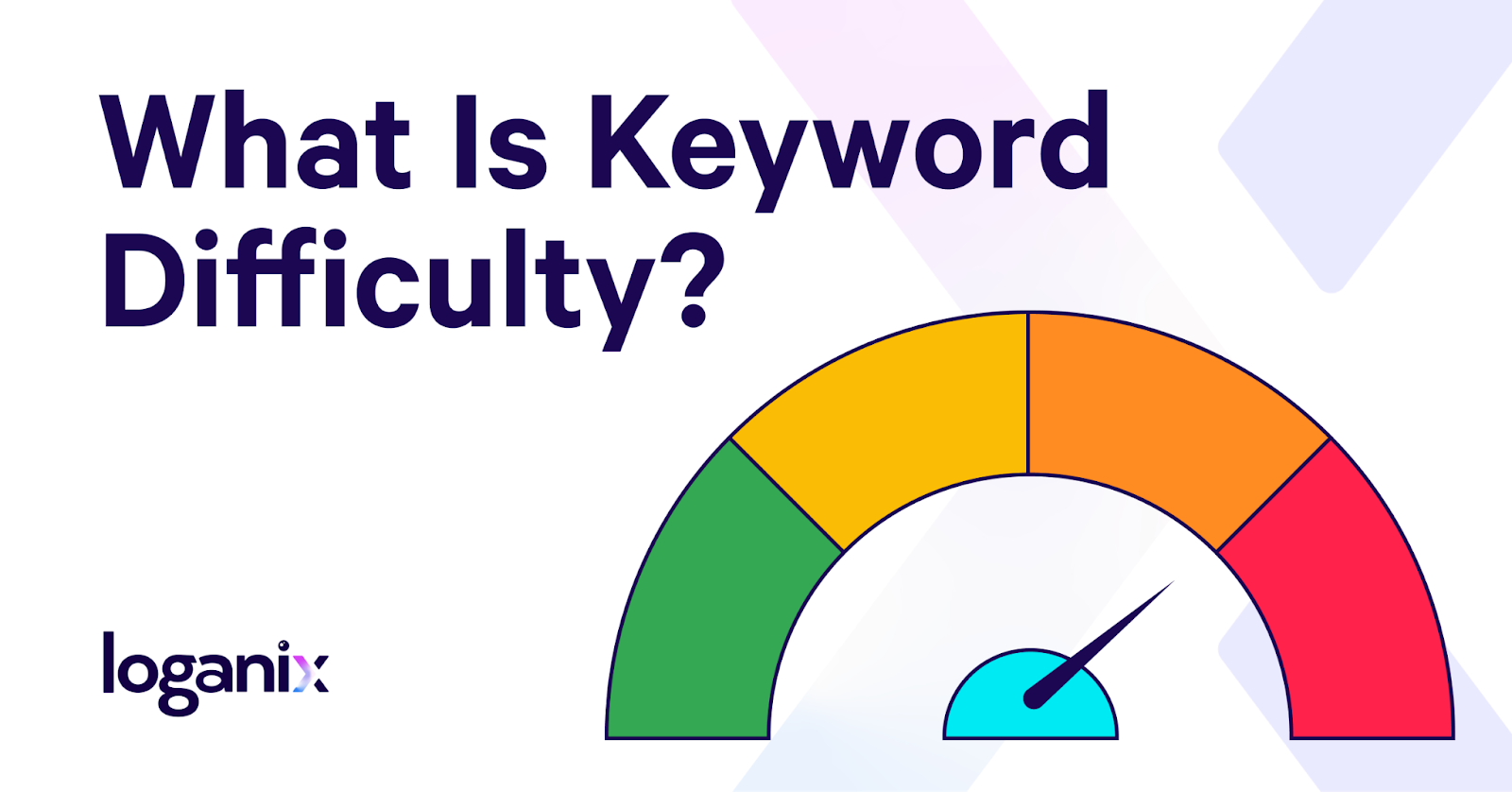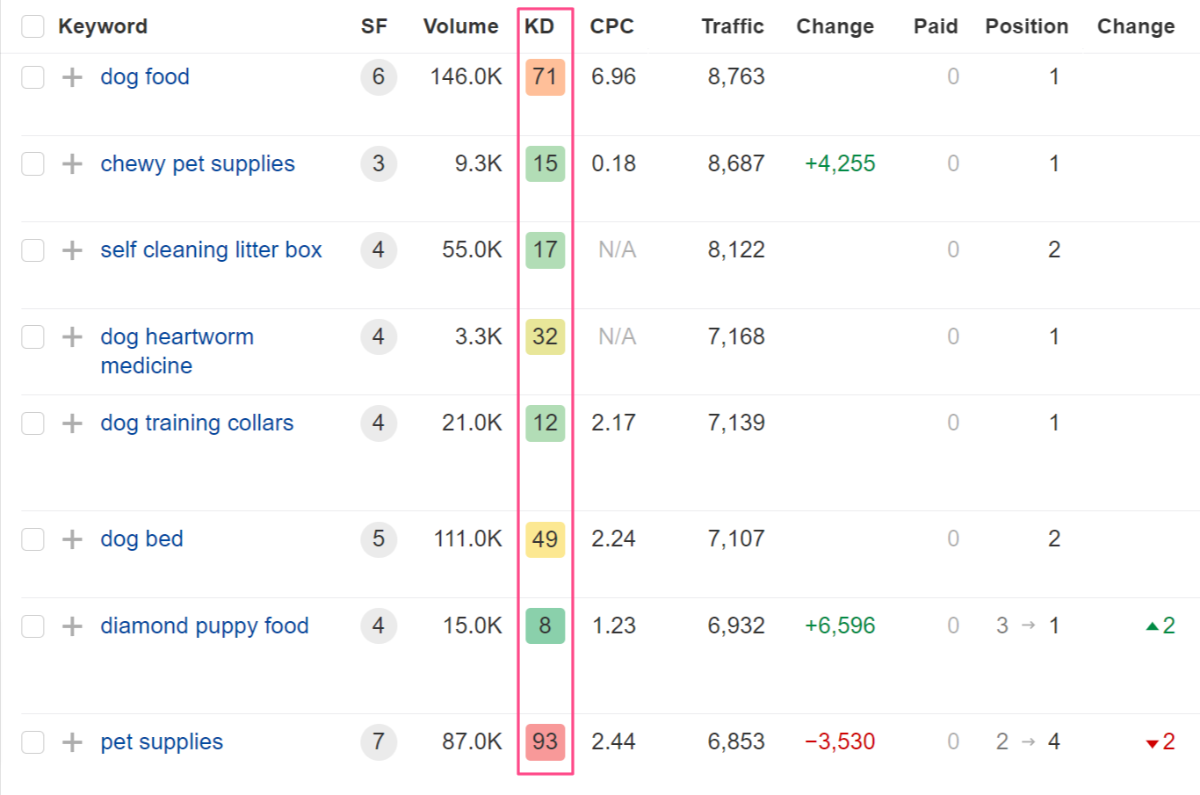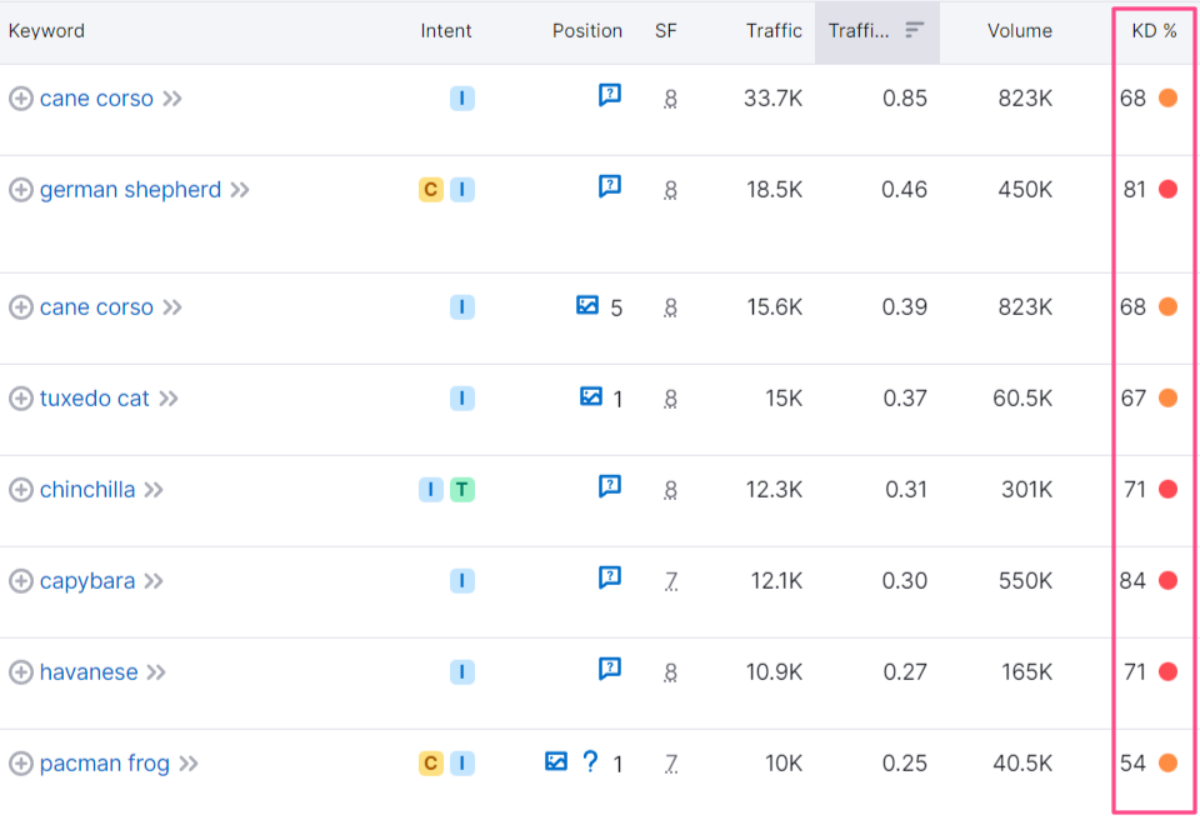What Is Keyword Difficulty? Keyword Competition in SEO

Hand off the toughest tasks in SEO, PPC, and content without compromising quality
Explore ServicesThink of keyword difficulty as the “Rubik’s Cube” of on-page SEO—while the concept is simple enough, it can be tricky, it’s multifaceted, and it requires a sharp strategy to solve.
But once you’ve mastered it, search engine optimization (SEO) wins come thick and fast.
To help you wrap your head around keyword difficulty and achieve SEO success, in this guide, we
- unpack the answer to the question, “What is keyword difficulty?”,
- delve into its pivotal role in SEO success,
- and reveal how to leverage it effectively with a set of tried-and-true best practices.
What Is Keyword Difficulty?
Keyword difficulty, often abbreviated as KD, is a metric used to help webmasters—that’s you—get an idea of how challenging it is to rank organically for a specific keyword in search engine results.
Typically, KD represents a percentage. A KD score of 0 suggests that a given keyword is relatively easy to rank for. This generally means there’s less competition for that keyword, the publishing website isn’t recognized as an authority on the topic, or the existing content ranking for that keyword isn’t strongly optimized.
While a KD score of 100 signifies that the keyword is extremely challenging to rank for. This could be due to intense competition, high-quality content already ranking for that keyword or a solid backlink profile of the pages currently occupying the top spots.
Learn more: SEO glossary 250+ terms explained.
Why is Keyword Difficulty Important?
So why should we give a hoot about keyword difficulty? If you haven’t already guessed, keyword difficulty is like a trusty roadmap, allowing you to navigate the search engine results pages (SERPs) like a pro.
Specifically, KD is important because:
1. It’s a Serious Time and Energy Saver
Let’s be real—there’s nothing quite as frustrating as spending your energy on a task only to discover it’s been a complete waste of time.
Major bummer.
This is where keyword difficulty steps in. It’s your personal ranking guide, bringing you insight into which keywords are worth your time and which ones most definitely aren’t—a heads-up that’ll allow you to sidestep any high-investment battles so you can choose your fights wisely.
2. KD is a Master Strategist
Crafting an effective SEO strategy can be likened to planning a successful military campaign. You need intelligence about the enemy—in this case, the competition.
With KD, you gain insights into the difficulty level of a keyword, which allows you to craft your SEO strategy more effectively. For instance, if a keyword is equivalent to storming a fortified castle, you might opt for long-tail keywords or different variations that represent a more accessible point of attack.
3. It’ll Keep Your Expectations in Check
High search volumes are serious eye candy. The thing is, high search volume doesn’t mean there’s plenty of traffic to go around. In just about all cases, the top-ranking sites will dominate and suck up all that sweet, sweet organic traffic.
So be sure to keep in mind that high search volume usually comes with equally high competition. This is where KD plays the role of your reality check, reminding you that the battle isn’t just about search volume but also about the strength of the competition you’re facing for a given keyword.
4. And is a Return on Investment (ROI) Maximiser
At the end of the day, SEO is an investment, and like any good investment, you want to see an even better return. With that in mind, focusing on keywords with a lower KD, especially if your website is in its infancy and still building its online presence, will deliver fast results. Fast results mean higher rankings, more traffic, and, ultimately, a greater return on your SEO investment.
Learn more: 5 tips for building an effective SEO keyword list.
How is Keyword Difficulty Calculated?
It’s important to note that keyword difficulty was not developed and is not recognized or used by Google’s various algorithms. Nope. In fact, the concept of keyword difficulty was made popular by well-known SEO tools like Moz, Semrush, and Ahrefs.
As you might expect, each company operates independently in defining its approach to measuring KD. Consequently, they each have their own unique ingredients, or factors, that they use to whip up a KD score. And because everyone’s recipe is different, you’ll notice that the KD scores can vary from tool to tool.
To help you grasp how each company goes about defining keyword difficulty, let’s take a quick look at how each tool comes up with a KD score.
Ahrefs Calculation

Ahrefs approach to calculating KD is fairly simple and straightforward. It’s weighted entirely on backlinks. Here’s how it works:
- Ahrefs reviews domains on the first page of search engine results for a specific keyword and then checks the number of backlinks each of these domains has.
- A high number of backlinks will result in a higher KD percentage.
- This simple approach makes it easier to understand the competition but may oversimplify some of Google’s ranking factors, possibly resulting in inaccuracies.
Moz Calculation

Less is known about Moz’s technique. As you can read here, they are a little more tight-lipped about how they calculate KD. Although, we aren’t completely left in the dark. This is what we do know:
- Moz considers the domain authority (DA) and page authority (PA) of all the pages on the first page of search results.
- The tool accounts for projected click-through rates (CTR) for all of these pages, with more visible (higher position) pages given more weight.
- It then averages all of these numbers for all ten sites on the first page to arrive at a KD percentage.
- Although the complex formula includes more ranking factors, it may not entirely mirror Google’s own algorithm and may not be entirely accurate.
Semrush Calculation

Semrush is fairly transparent about how they calculate KD. Here’s their approach:
- Considers domains on Google’s first page, the type of results shown for a keyword, and the search region.
- Amongst a bunch of considerations, domains are largely evaluated based on the number of backlinks (both nofollow and dofollow with different weights) and domain authority scores.
- Accounts for the type of search results Google displays for the keyword. For example, if a keyword generates rich results, it may be harder to rank for.
- Takes into account the region, as smaller countries tend to have less competition due to lower population.
Learn more: 10 small business SEO tools (paid and free).
Conclusion
In a nutshell, keyword difficulty is a time-saver, a strategist, a reality check, and an ROI maximizer all rolled into one.
The thing is, understanding KD is only one piece of the SEO puzzle. Effectively implementing your newfound KD skills within a broader, comprehensive SEO strategy is where the real magic happens. And this is where the expertise comes in—expertise that we at Loganix excel in.
🚀 So, if you’re ready to unlock the full potential of your SEO, check out our suite of SEO services today! 🚀
Hand off the toughest tasks in SEO, PPC, and content without compromising quality
Explore ServicesWritten by Aaron Haynes on October 18, 2023
CEO and partner at Loganix, I believe in taking what you do best and sharing it with the world in the most transparent and powerful way possible. If I am not running the business, I am neck deep in client SEO.





